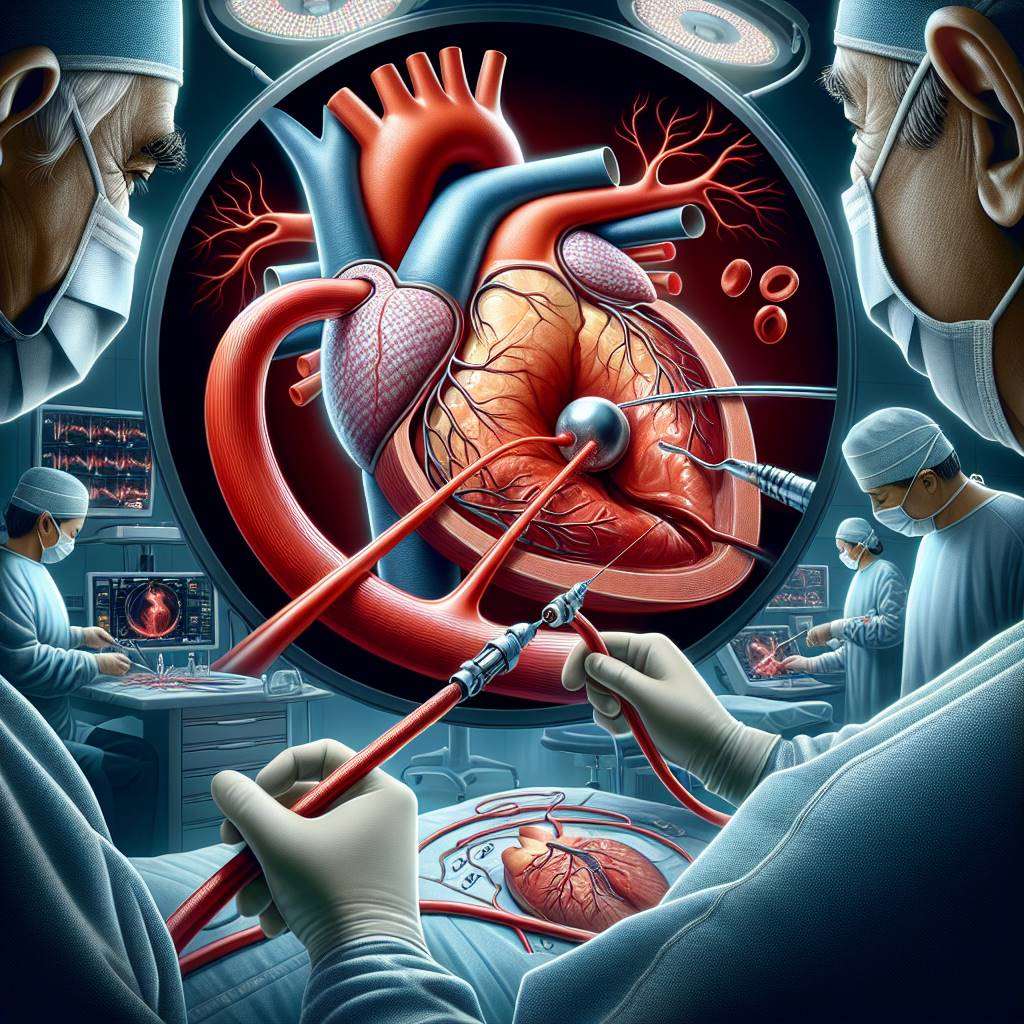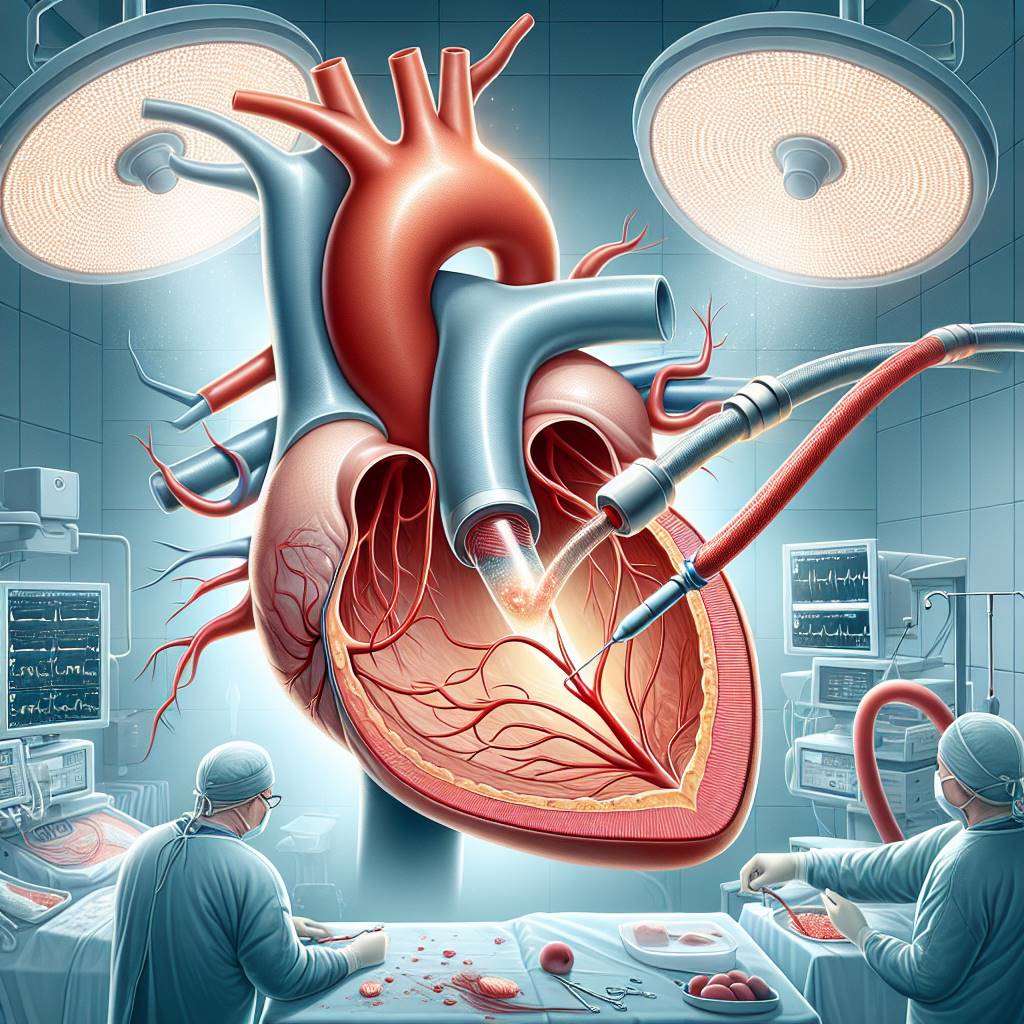Undergoing your first angioplasty can feel overwhelming, especially if you’re unfamiliar with the procedure. Angioplasty is a minimally invasive treatment used to open blocked or narrowed arteries, often to treat coronary artery disease. Knowing what to expect can help ease anxiety and ensure you’re better prepared for this life-saving intervention.
Many patients wish they had more information before their first angioplasty, including details about the procedure, recovery, and potential risks. Understanding the importance of pre-procedure preparation and post-procedure care can make a significant difference in your experience. This guide will provide insights to help you feel informed and confident about your angioplasty journey.
What to Expect During Your First Angioplasty Procedure
Angioplasty is typically performed in a catheterization lab by a cardiologist. The procedure involves inserting a thin tube, or catheter, into a blood vessel, usually in the groin or wrist. A small balloon at the tip of the catheter is inflated to widen the blocked artery, and in many cases, a stent is placed to keep the artery open.
You’ll be awake during the procedure but given local anesthesia to numb the insertion site. The entire process usually takes about 30 minutes to an hour. It’s normal to feel some pressure but not pain. After the procedure, you’ll be monitored in a recovery area to ensure there are no complications.
Here’s a quick overview of what happens during angioplasty:
- Insertion of the catheter through a blood vessel.
- Inflation of the balloon to open the artery.
- Placement of a stent, if necessary.
- Monitoring for any immediate complications.
Understanding these steps can help reduce anxiety and prepare you for what’s ahead.

Key Questions to Ask Your Doctor Before Angioplasty
Before undergoing angioplasty, it’s essential to have a clear understanding of the procedure and its implications. Asking the right questions can help you feel more confident and informed. Here are some key questions to consider:
- What are the specific reasons for recommending angioplasty?
- Are there alternative treatments to consider?
- What are the potential risks and complications of the procedure?
- How long will the recovery process take?
- Will I need to take medications or make lifestyle changes after the procedure?
Discussing these topics with your doctor can help you make informed decisions and address any concerns. It’s also a good idea to bring a family member or friend to your appointment to help you remember the information shared.
How to Prepare Mentally and Physically for Angioplasty
Preparing for angioplasty involves both mental and physical readiness. On the physical side, your doctor may ask you to avoid eating or drinking for several hours before the procedure. You may also need to stop taking certain medications, such as blood thinners, to reduce the risk of complications.
Mentally, it’s normal to feel anxious about the procedure. To ease your mind, consider learning more about the process and discussing your concerns with your healthcare provider. Practicing relaxation techniques, such as deep breathing or meditation, can also help reduce stress.
Here are some tips to prepare effectively:
- Follow all pre-procedure instructions provided by your doctor.
- Arrange for someone to drive you home after the procedure.
- Pack comfortable clothing and any necessary personal items for your hospital stay.
Being well-prepared can help ensure a smoother experience and a quicker recovery.
Understanding the Risks and Benefits of Angioplasty
Like any medical procedure, angioplasty comes with both risks and benefits. The primary benefit is improved blood flow to the heart, which can relieve symptoms such as chest pain and reduce the risk of a heart attack. For many patients, angioplasty significantly improves quality of life and allows them to return to normal activities.
However, it’s important to be aware of potential risks, which may include bleeding, infection, or an allergic reaction to the contrast dye used during the procedure. In rare cases, there may be complications such as artery damage or the need for emergency surgery.
Here’s a comparison of the pros and cons of angioplasty:
| Benefits |
Risks |
| Improved blood flow |
Bleeding or infection |
| Relief from chest pain |
Allergic reaction to dye |
| Reduced risk of heart attack |
Rare artery damage |
Discussing these factors with your doctor can help you weigh the risks and benefits and make an informed decision.
What Happens in the Recovery Room After Angioplasty?
After your angioplasty, you’ll be taken to a recovery room where medical staff will monitor your vital signs and the insertion site. It’s normal to feel some soreness or bruising at the catheter site, but severe pain should be reported immediately.
You may need to lie flat for a few hours to prevent bleeding from the insertion site. During this time, your doctor will assess your condition and provide instructions for post-procedure care. Most patients can return home the same day or the following day, depending on their overall health and the complexity of the procedure.
Recovery tips include:
- Keep the insertion site clean and dry.
- Avoid heavy lifting or strenuous activities for a few days.
- Take prescribed medications as directed.
Following these guidelines can help ensure a smooth recovery and reduce the risk of complications.
Common Myths About Angioplasty You Should Ignore
Angioplasty is a life-saving procedure, but many people are hesitant due to common myths. One widespread misconception is that angioplasty is only for elderly patients. In reality, individuals of all ages, including younger adults, may require this procedure if they have significant coronary artery blockages.
Another myth is that angioplasty is a permanent cure for heart disease. While it can restore blood flow, it doesn’t eliminate the need for a healthy lifestyle. Patients must adopt a heart-friendly diet, regular exercise, and avoid smoking to maintain long-term benefits.
Some also believe that angioplasty is extremely risky. However, advancements in medical technology have made it a relatively safe and minimally invasive procedure with high success rates.

How Long Does Angioplasty Recovery Take?
Recovery time after an angioplasty can vary depending on the patient’s overall health and the complexity of the procedure. In most cases, patients can resume light activities within a few days. However, full recovery may take a few weeks, especially if a stent was placed during the procedure.
It’s essential to follow your doctor’s advice during recovery. Avoid heavy lifting, strenuous exercise, and smoking during this period. Patients are usually advised to attend follow-up appointments to monitor their progress and ensure the arteries remain open.
Here’s a general timeline for recovery:
- 1–2 days: Return home and rest.
- 1 week: Resume light activities.
- 2–4 weeks: Gradually return to normal activities, including work.
Always consult your doctor before resuming any physical activity.
Diet and Lifestyle Changes After Your Angioplasty
After an angioplasty, adopting a heart-healthy lifestyle is crucial to prevent further complications. A balanced diet rich in fruits, vegetables, whole grains, and lean proteins can help maintain optimal heart health. Avoid foods high in saturated fats, trans fats, and sodium, as they can contribute to artery blockages.
Regular exercise is equally important. Activities like walking, swimming, or yoga can improve cardiovascular health. However, always consult your doctor before starting any exercise routine.
Other lifestyle changes include quitting smoking and managing stress. Smoking damages blood vessels and increases the risk of heart disease. Stress management techniques like meditation or deep breathing can also support recovery.
Remember, these changes are not temporary but a lifelong commitment to your heart’s health.
Will I Need Medication After My Angioplasty Procedure?
Yes, most patients will need to take medications after an angioplasty to ensure the success of the procedure and prevent complications. Commonly prescribed medications include antiplatelet drugs, which help prevent blood clots from forming around the stent.
Other medications may include cholesterol-lowering drugs like statins, blood pressure medications, and drugs to manage diabetes if applicable. These medications work together to reduce the risk of future cardiovascular events.
It’s crucial to take your medications as prescribed and not stop them without consulting your doctor. Missing doses can increase the risk of complications, such as stent thrombosis or heart attack.
Discuss any side effects or concerns with your healthcare provider to ensure the best outcomes.
Recognizing Warning Signs After Angioplasty: When to Call Your Doctor
After an angioplasty, it’s important to monitor your health and recognize any warning signs that may indicate complications. Common symptoms to watch for include:
- Severe chest pain or discomfort.
- Shortness of breath.
- Swelling or pain at the catheter insertion site.
- Fever or chills, which could indicate an infection.
If you experience any of these symptoms, contact your doctor immediately. Ignoring these signs can lead to serious complications, such as a heart attack or stent failure.
Regular follow-ups with your doctor are also essential. These appointments allow your healthcare provider to monitor your recovery, adjust medications, and address any concerns you may have.
Being proactive about your health can make a significant difference in your long-term recovery and overall well-being.
How Angioplasty Can Improve Your Heart Health
Angioplasty is a minimally invasive procedure designed to restore blood flow in blocked or narrowed arteries. It is commonly used to treat coronary artery disease (CAD), a condition where plaque buildup restricts blood flow to the heart. This procedure can significantly reduce the risk of a heart attack.
During angioplasty, a small balloon is inserted into the artery and inflated to widen the vessel. In many cases, a stent is placed to keep the artery open. This helps improve oxygen supply to the heart, alleviating symptoms like chest pain and shortness of breath.
Benefits of angioplasty include quicker recovery compared to open-heart surgery and a lower risk of complications. It’s a life-saving procedure for those with severe blockages.

What Does an Angioplasty Feel Like? Patient Insights
Many patients feel anxious before their first angioplasty, but understanding the procedure can ease concerns. During the procedure, you’ll likely be awake but sedated. You might feel mild pressure as the catheter is inserted, but there’s usually no significant pain.
Some patients report a warm sensation when the contrast dye is injected to visualize the arteries. After the procedure, you may feel slight soreness at the catheter insertion site, typically in the groin or wrist. This discomfort is temporary and manageable with medication.
Most patients are surprised by how quickly they recover and how much better they feel afterward. Knowing what to expect can help you approach the procedure with confidence and peace of mind.
How to Manage Anxiety Before Your Angioplasty
Feeling anxious before an angioplasty is normal, but there are ways to manage it effectively. Start by educating yourself about the procedure. Understanding that angioplasty is a safe and common treatment for heart disease can help reduce fear.
Practice relaxation techniques like deep breathing or meditation to calm your mind. Talking to your doctor about your concerns can also provide reassurance. They can explain the steps involved and address any specific worries you have.
- Bring a trusted friend or family member for emotional support.
- Follow your doctor’s pre-procedure instructions carefully.
- Focus on the benefits, such as improved heart health and reduced symptoms.
Remember, your healthcare team is there to ensure your safety and comfort throughout the process.
Can I Resume Normal Activities After Angioplasty?
One of the most common questions after angioplasty is about resuming daily activities. While recovery times vary, most patients can return to light activities within a few days. However, it’s essential to follow your doctor’s advice to avoid complications.
For the first week, avoid heavy lifting or strenuous exercise. Gradually reintroduce activities like walking, which can aid in recovery. If a stent was placed, your doctor might recommend medications to prevent clot formation and ensure the stent remains open.
Here’s a general timeline:
| Activity |
When to Resume |
| Light walking |
1–2 days |
| Work (desk job) |
1 week |
| Strenuous exercise |
2–4 weeks |
Always consult your doctor before resuming any activity, especially if you experience symptoms like chest pain or fatigue.
Tips for a Smooth Recovery After Your First Angioplasty
Recovering from your first angioplasty requires a combination of rest, medication, and lifestyle changes. Follow these tips for a smooth recovery:
- Take prescribed medications, including blood thinners, as directed by your doctor.
- Adopt a heart-healthy diet rich in fruits, vegetables, and whole grains.
- Avoid smoking and limit alcohol consumption to improve overall heart health.
- Attend follow-up appointments to monitor your progress and address any concerns.
It’s also important to listen to your body. If you experience symptoms like chest pain, shortness of breath, or swelling, contact your doctor immediately. Making these changes can help prevent future complications and improve your quality of life.
Best Coronary Angioplasty Doctors in India
Dr. Naresh Trehan, Chairman and Managing Director of Medanta - The Medicity, Gurugram, is a globally renowned cardiac surgeon with over 50 years of experience. Another expert is Dr. Ashok Seth, Chairman of Fortis Escorts Heart Institute, Delhi, with over 30 years of experience in interventional cardiology. Both doctors are recognized for their medical excellence, international exposure, and pioneering contributions to angioplasty.
Learn more on best coronary angioplasty doctors in india
Best Coronary Angioplasty Hospitals in India
Fortis Escorts Heart Institute, Delhi, and Medanta - The Medicity, Gurugram, are among India's leading hospitals for angioplasty. Both are NABH and JCI-accredited, offering advanced facilities like robotic surgery and multidisciplinary cardiac care. They are known for their international patient services and high success rates in complex procedures.
Find more best coronary angioplasty hospitals in india
Coronary Angioplasty Cost in India
The cost of an angioplasty in India typically ranges from INR 1,50,000 to INR 3,50,000 (approximately USD 1,800 to USD 4,200). Factors like the doctor’s expertise, hospital type, and procedure complexity influence the cost. The average hospital stay is 1-2 days. India offers a significant cost advantage compared to Western countries, with options for medical insurance and third-party financing.
Learn coronary angioplasty cost in india
Coronary Angioplasty Treatment in India
Angioplasty in India involves inserting a catheter with a balloon to open blocked arteries, often followed by placing a stent. Advanced techniques like drug-eluting stents and robotic-assisted angioplasty are widely used. Recovery typically takes 1-2 weeks. Top hospitals adhere to global medical protocols and leverage the latest technologies for optimal outcomes.
Learn on Coronary Angioplasty Treatment in India
FAQs
What is angioplasty?
Angioplasty is a minimally invasive procedure used to open blocked or narrowed arteries, typically caused by atherosclerosis. It involves inserting a balloon catheter to restore blood flow and may include placing a stent to keep the artery open.
How long does an angioplasty procedure take?
The procedure usually takes 30 minutes to 2 hours, depending on the complexity of the blockage and the number of arteries treated.
Is angioplasty painful?
Angioplasty is generally not painful as it is performed under local anesthesia. Patients may feel mild pressure or discomfort during the procedure.
What are the risks associated with angioplasty?
While angioplasty is safe, potential risks include bleeding, infection, blood clots, or restenosis (re-narrowing of the artery). Serious complications are rare when performed by experienced specialists.
How long is the recovery period after angioplasty?
Most patients recover within 1-2 weeks. Light activities can be resumed within a few days, but strenuous activities should be avoided for at least a week.
Will I need medication after angioplasty?
Yes, patients are typically prescribed antiplatelet drugs like aspirin or clopidogrel to prevent blood clots and ensure the stent remains open.
Can angioplasty cure heart disease?
Angioplasty treats blocked arteries but does not cure coronary artery disease. Lifestyle changes and medications are essential to manage the condition long-term.
Is angioplasty suitable for all heart patients?
Angioplasty is recommended for patients with significant artery blockages. However, it may not be suitable for those with multiple blockages or severe heart conditions, where bypass surgery might be preferred.
How successful is angioplasty?
The success rate of angioplasty is over 95% in experienced hands. Long-term success depends on factors like lifestyle changes and adherence to prescribed medications.
Can I travel after angioplasty?
Patients can usually travel within 1-2 weeks after the procedure, but it is advisable to consult your doctor before making travel plans.
Understanding Coronary Angioplasty: When and What to Expect
Coronary angioplasty is a common procedure used to treat narrowed or blocked coronary arteries. Recognizing the symptoms that may indicate the need for this intervention is crucial for timely treatment. If you're experiencing chest pain, shortness of breath, or fatigue, it may be time to consult a healthcare professional. For a comprehensive overview of the symptoms and diagnostic procedures, check out our guide on how to know if you need coronary angioplasty.
Once a decision for angioplasty is made, understanding the types of stents available is essential. Stents are small mesh tubes that help keep arteries open after angioplasty. The two primary types are drug-eluting stents, which release medication to prevent artery blockage, and bare metal stents, which are simpler in design. To learn more about the differences and benefits of each type, visit our detailed explanation on stent types.
Being informed about both the symptoms that necessitate angioplasty and the stent options available can empower patients to make better decisions regarding their heart health.